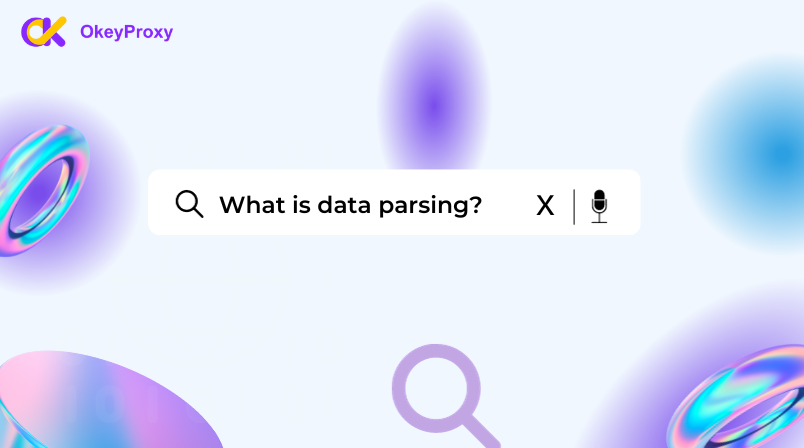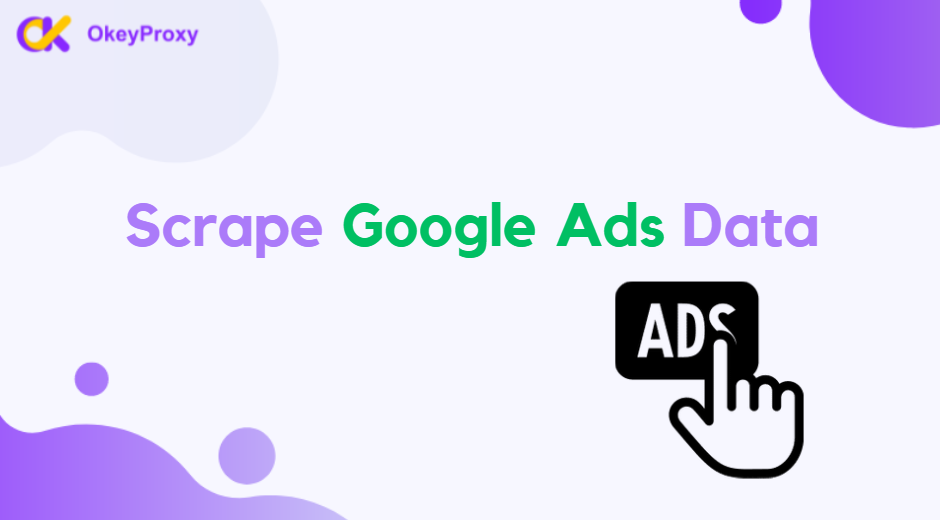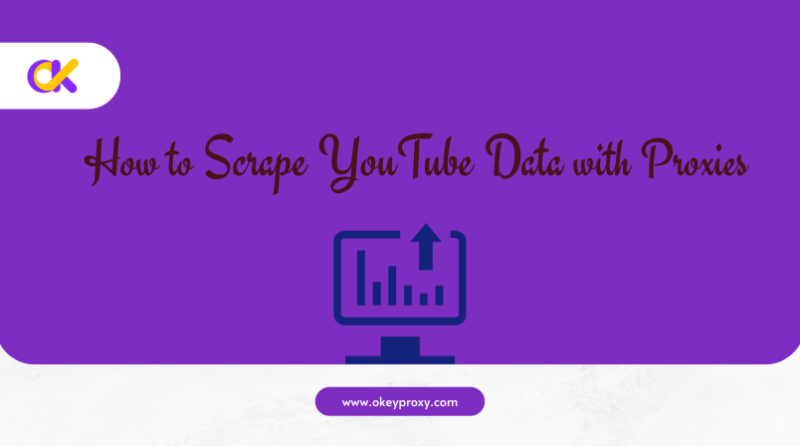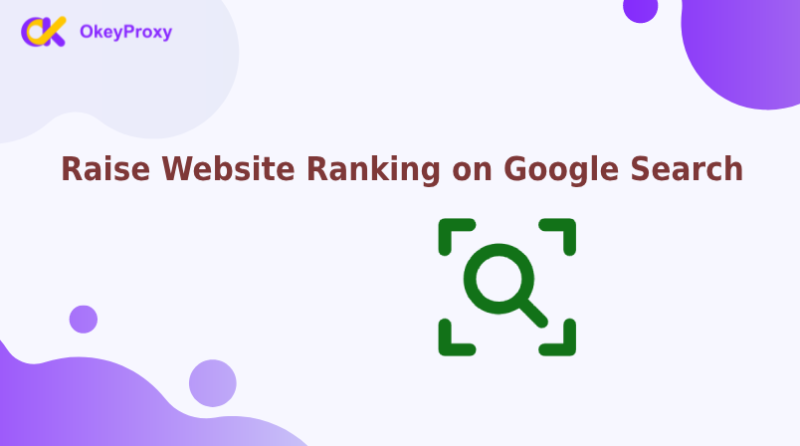Data parsing, the conversion of data from one format to another, is widely used for structuring data, which is usually done to make existing, unstructured, unreadable data easier to understand.
¿Qué es el análisis sintáctico de datos?
As a cornerstone of modern data processing, briefly, data parsing refers to the process of analyzing and extracting relevant information from unstructured or semi-structured data sources. It involves breaking down the data into smaller components, such as fields, records, or attributes, to identify and extract specific data points. This structured information can then be stored, analyzed, and utilized for various purposes.
Why Data Parsing is Necessary?
A menudo, los ordenadores necesitan traducción para comunicarse eficazmente. Para ayudar a las máquinas a entender cadenas de datos en un formato actual que no reconocen o entienden, se utiliza el análisis sintáctico para convertir los datos en una forma que el dispositivo pueda entender y manipular, lo que es similar a proporcionar una traducción para que las personas puedan entender un texto en otro idioma.
Data parsing is a process that changes unstructured and illegible strings of data into structured and simple collections that computers can easily understand, which has many benefits:
- Data Organization: Converts raw or unstructured data into structured formats for easier analysis and manipulation.
- Automation: Simplifies workflows by automatically extracting and formatting information.
- Interoperability: Ensures systems with varying data formats can seamlessly communicate.
- Improved Decision-Making: Provides clean and actionable data for analytics or reports.
Desde las finanzas y la educación hasta los macrodatos y el comercio electrónico, el análisis de datos se utiliza hoy en día en numerosos sectores. Un analizador de datos eficaz puede extraer información relevante de datos sin procesar sin ninguna intervención manual. Los datos analizados pueden utilizarse para diversas actividades, como estudios de mercado, comparaciones de precios, etc. Esta tecnología permite a las empresas tomar decisiones con conocimiento de causa y obtener una ventaja competitiva. Además, el análisis de datos mejora la eficacia del trabajo y reduce los costes al automatizar tareas tediosas, con el consiguiente ahorro de tiempo y mano de obra. En la feroz competencia del mercado actual, el análisis de datos se ha convertido en un factor clave para los logros de las empresas.
Use Cases of Parsed Data
- Business Intelligence: Integrating and analyzing data for decision-making and trend forecasting.
- Web Scraping: Extracting data from websites for e-commerce, lead generation, and media monitoring.
- Application Development: Automating data input, powering real-time apps, and supporting machine learning.
- Financial Analysis: Real-time market data parsing for trading, risk assessment, and fraud detection.
- Marketing: Personalizing campaigns, analyzing SEO, and evaluating ad performance.
- Healthcare: Structuring patient data, aiding drug research, and monitoring public health trends.
- Legal: Extracting and organizing legal documents for compliance and research.
- Supply Chain: Managing inventory, tracking shipments, and optimizing delivery routes.
- Education: Analyzing student data, parsing research content, and curating learning materials.
- Social Media: Analyzing sentiment, tracking trends, and moderating content.
- Retail: Analyzing customer feedback, optimizing loyalty programs, and forecasting demand.
- Government: Assisting in policy development, crisis management, and ensuring transparency.
How Does Data Parsing Work?
Data parsing typically involves the following steps:
-
Input Identification
Reading raw data from files, APIs, or web pages.
-
Tokenization
Breaking down data into smaller elements like words, symbols, or numbers.
-
Syntactic Analysis
Validating the structure or format against predefined rules (e.g., XML, JSON schemas).
-
Data Extraction
Retrieving relevant information based on the context.
-
Output Conversion
Formatting the extracted data into desired structures like tables, lists, or objects.
Downsides of Data Parsing
Cuando se analizan los datos, normalmente se trabaja con entradas que pueden ser brutas, no estructuradas o semiestructuradas. Estas entradas pueden proceder de diversas fuentes de datos, como sensores, archivos de registro, bases de datos o páginas web. Dado que las fuentes de datos pueden ser diferentes, el formato y la calidad de los datos también pueden variar entre sí. Sin embargo, incluso después de limpiarlos y transformarlos, los datos de entrada pueden seguir presentando imprecisiones, errores e incoherencias.
Para procesar varios documentos de entrada al mismo tiempo y ahorrar tiempo, es posible que desee emplear métodos para paralelizar el procesamiento de datos. Sin embargo, este enfoque puede aumentar el uso de recursos y la complejidad general. Por lo tanto, para analizar big data de forma eficaz, es necesario utilizar herramientas y técnicas avanzadas.
Popular Data Parsing Formats
- JSON (JavaScript Object Notation): Lightweight and human-readable format widely used in APIs.
- XML (eXtensible Markup Language): A flexible format for structured data exchange.
- CSV (Comma-Separated Values): Commonly used for tabular data storage and import/export tasks.
- HTML: Essential for parsing web page content during web scraping.
Data Parsing Techniques
- Regular Expressions (Regex): Ideal for simple text extractions but lacks scalability for complex structures.
- DOM Parsing: Used for navigating and extracting structured HTML or XML documents.
- Event-Driven Parsing: Suitable for large datasets; processes input as events (e.g., SAX for XML).
- Libraries and Frameworks: Programming languages like Python, Java, or PHP offer robust libraries for parsing.
Popular Tools for Parsing Data
| Tool | Best For | Language |
|---|---|---|
| BeautifulSoup | Web scraping and HTML/XML parsing | Python |
| JSON.parse() | Parsing JSON in JavaScript | JavaScript |
| Pandas | Handling tabular data (e.g., CSV, Excel) | Python |
| Xml.etree | XML parsing | Python |
| Cheerio.js | Web scraping in Node.js environments | JavaScript |
| Gson | JSON parsing for Android/Java apps | Java |
Real-World Applications of Data Parsing
- Web Scraping: Extracting product prices, reviews, or headlines from websites.
- Data Integration: Consolidating information from multiple sources into a unified format.
- Log Analysis: Parsing server logs to monitor activity, detect errors, or track user behavior.
- Natural Language Processing (NLP): Tokenizing and analyzing text for sentiment analysis, translation, or summarization.
- File Conversion: Transforming formats like JSON to CSV for compatibility with databases or analytics tools.
Challenges in Data Parsing
Handling Unstructured Data
Parsing free-form text or inconsistent inputs.
Problemas de rendimiento
Processing large datasets efficiently without excessive resource consumption.
Data Validation
Ensuring parsed data conforms to expected schemas.
Dynamic Content
Adapting to frequently changing formats, especially on websites.
Conclusión
Data parsing is a vital process for extracting structured information from unstructured or semi-structured data sources. By parsing data, businesses can improve data quality, enhance data analysis, and automate processes. The applications of data parsing span across industries, including web scraping, document processing, data integration, and natural language processing. For web scraping or handling dynamic content with proxies, reliable proxy services can enhance performance by bypassing geo-restrictions and ensuring smooth access to data-rich websites. Therefore, OkeyProxy is believed a reliable provider for users to assist with web scraping tasks. Applying data parsing techniques empowers organizations to unlock the power of structured information, enabling informed decision-making, improved efficiency, and a competitive edge in the data-driven world.





